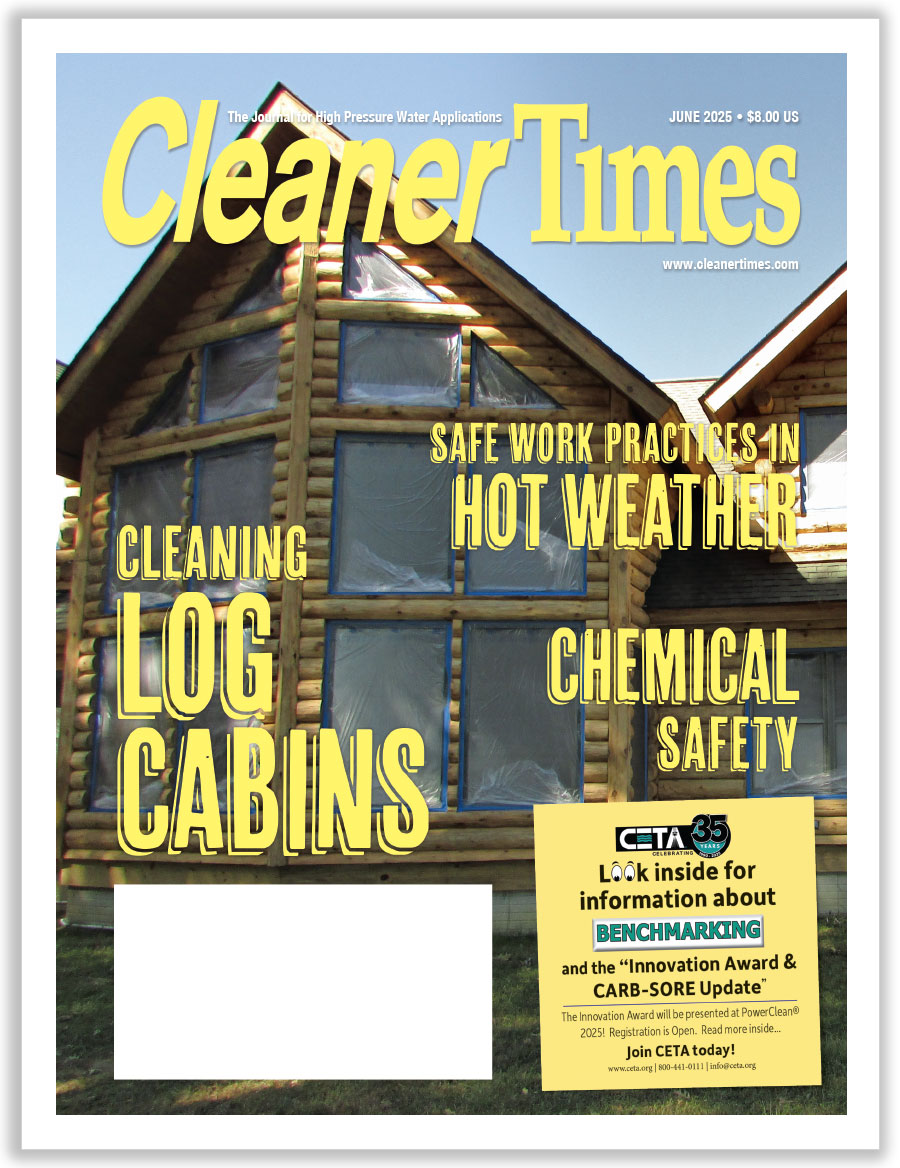
The Best Ways to Be Protected
By Diane M. Calabrese / Published November 2017

P
roduct Liability Protection
Defect-free products and disclaimers should protect manufacturers and distributors from liability. Yet they do not.
Litigiousness abounds in our society. Even when an end user misuses an excellent product, the manufacturer or distributor may be held liable for any injury. In addition, always looming is the remote chance a manufacturer may unknowingly receive and then incorporate a defective part in machines. As a result, product liability protection demands attention and action.
The range of potential entities against whom claims may be made is wide. Lawyers seeking compensation for plaintiffs take a broad view. They also generally make a studied pursuit of those who have the deepest pockets, aka the greatest assets.
“Liability for a product defect could rest with any part in the product’s chain of distribution,” says Bonnie Bradburn, account executive at Joseph D. Walters Insurance in Belle Vernon, PA. Every link in the chain is vulnerable.
Bradburn explains that the list of potential defendants includes the product manufacturer, the component parts manufacturer, a party that assembles or installs the product, the wholesaler, and the retailer that sells directly to the customer. The straight-up question becomes: Who needs product liability insurance?
“In most cases, product liability insurance will be covered under a general liability policy,” says Bradburn. “It protects a company against claims or suits arising from products a company has manufactured or sold.
“It covers a manufacturer’s or seller’s liability for bodily injury or property damage sustained by a third party due to a defect or malfunction of the product,” continues Bradburn. “The product may be virtually any type of goods sold to businesses or the public. The injured party may be a buyer or user of the product, or even a bystander.”
The bystander scenario must be carefully observed. If a contractor does not follow instructions when using a pressure washer and injures a passerby, the contractor would in theory be liable. But if the contractor does not have the resources to compensate the injured party, a lawyer for the party may look for a way to draw in a distributor or manufacturer.
For example, did the contractor receive thorough instructions from the distributor? Did the manufacturer put clear warnings on a device to indicate it should not be used in a place with pedestrian traffic?
There are typically three bases for liability claims, says Bradburn. They are manufacturing or production flaw, design defect, and defective warnings or instructions.
Let’s consider them in turn.
“In a manufacturing or production flaw claim, the claimant alleges that some phase of the production process created a defect in the final product so the final product was unreasonably hazardous,” explains Bradburn. “With a design defect claim, the claimant contends the product’s design is inherently unsafe.”
The third basis is broad. “In the defective warnings or instructions category, the claimant alleges that the seller failed to provide adequate instructions on the proper use of the product, or that it failed to warn buyers of the product’s risk,” says Bradburn.
Warning buyers about every conceivable risk is impossible. A contractor could trip and accidently spray a weak tree limb that then falls on his partner’s head. Did the manufacturer or distributor warn about severing weak limbs? Some possibilities may seem ridiculous, but particularly in regions where lawyers are concentrated, anything can happen.
Again, it’s deep pockets. A contractor might not have the resources to compensate his partner for the injury from the limb, when a distributor or manufacturer—if found liable—would.
General liability insurance should protect the manufacturer or distributor in the tree limb example. But if the nozzle of a spray gun were defective and that knocked an operator off his stride, it’s a different situation. Product liability insurance would be needed by the manufacturer or distributor, unless the general liability insurance policy were so comprehensive that it included product defects.
There’s only one way to be certain which coverage a business has in effect. “Review your insurance policy to make sure you have this valuable product liability coverage to protect you and your company,” says Bradburn.
For incentive in taking on periodic policy review, think of the investment made in a business. “You worked hard to build your business and want to make sure it keeps its good reputation,” says Bradburn.
Standards Matter
Dr. Marlo Dean, senior support services manager at Kärcher North America, Camas, WA, offers a perspective that resonates with that of Bradburn. “Most people don’t give the risk of a lawsuit a second thought,” he says. “But with liability lawsuits on the rise and attorneys seeking larger awards, the risk is very real.”
Any type of equipment may become the subject of a lawsuit. “Electrical products have a higher risk of dangerous electrocutions; however, this type of equipment has requirements for additional safety devices such as GFCIs [ground-fault circuit interrupters] and dielectric testing,” explains Dean.
Industry standards developed and adhered to with safety in mind go a long way toward preventing incidents. Still, anything can happen.
“I would recommend liability protection when doing business,” says Dean. “Several pressure washer
dealers have been sued for performing service on a product. Doing business in general opens the door for liability.”
Combining a commitment to standards with liability insurance is the surest way to garner protection. “Every company should have liability insurance, and every manufacturer should be in compliance with OSHA section 1910.399 and Consumer Protection Safety Act 104 section 14(b) and section 14(a)(2) requiring third-party testing to industry safety standards,” says Dean.
OSHA [Occupational Safety and Health Administration] section 1910.399 encompasses the standards and testing that equipment (or an installation) must meet to be acceptable to the National Electrical Code and corresponding federal rules. Equipment (and installations) must be tested by a nationally-recognized testing laboratory (NRTL) and determined to be safe; or, it may be tested by state, municipal, or local entities that conform to federal testing standards.
Among the many requirements contained in OSHA standard 1910.399 are those that concern the replacement, modification, repair, or rehabilitation of electrical equipment. The standard is comprehensive and updated regularly. For example, one part of the standard concerns the Canadian Standards Association (CSA) and its role as a NRTL.
The Consumer Product Safety Act (CPSA) adds to expectations for manufacturers, who must not only protect the public against unreasonable risks of injury but also assist consumers in evaluating comparative safety of products. The CPSA also seeks to minimize conflicting regulations at different levels of government and collect data on injuries, illnesses, and deaths caused by consumer products (with the goal of prevention in future).
Manufacturers endeavor to make safe and excellent products, improving them continuously. Testing matters, though.
The value to manufacturers in having their products certified by a third-party NRTL is immeasurable should a claimant come forward. In litigation where a manufacturer is drawn into a claim through subrogation, the certification is particularly useful.
“Subrogation means one person or party—normally an insurance company— stands in place of the insured,” explains Dean. “Subrogation issues surface when a person has been injured and someone other than the person or party at fault pays all or some of the damages resulting from the injury.”
What claim could be made against a manufacturer of an excellent product? “The first claim made by a plaintiff attorney is failure to warn,” says Dean. “If you have your products listed and certified by a third-party NRTL to industry safety standards, it makes it more difficult for the plaintiff attorney to find fault.”
Dean explains the safety standards that must be met to merit certification include both the warnings that must accompany the equipment and the manner in which the warnings should be written. Of course, the certification process also includes tests of design, safety components, and all other components, as well as a search for potential safety defects.
Third-party testing adds to the product liability protection for a manufacturer. It also illustrates why any distributor that services equipment must rehabilitate and replace components only within the parameters authorized by the OEM [original equipment manufacturer]. To do otherwise could make the distributor liable for a claim if a product fails or causes harm to property or people.
Product disclaimers may seem attractive as a way to stay clear of liability. But the broadest disclaimer, stating a company will not be held liable for any kinds of damages that derive from the use or misuse of a product, does not offer much protection for two reasons. One, manufacturers and distributors have an implied responsibility for selling a sound piece of equipment. Two, misuse must be bordering on outrageous—taking a pressure washer into a shower stall and attempting to use it in lieu of a shower head faucet—to be definitely covered by the disclaimer. Even then, anything is possible in litigation.
There is no harm in offering a disclaimer to customers. But product liability insurance (stand alone or under general policy) and product certification, which attests to the standards the product meets, are the best ways to be protected.





